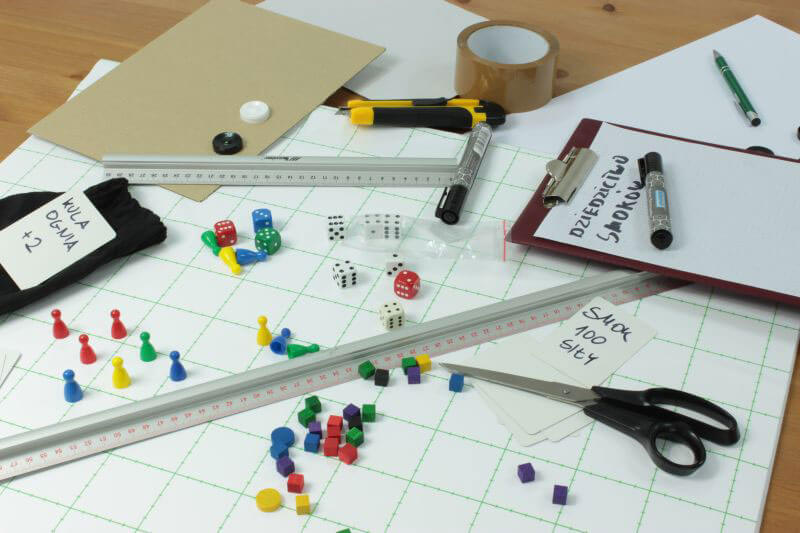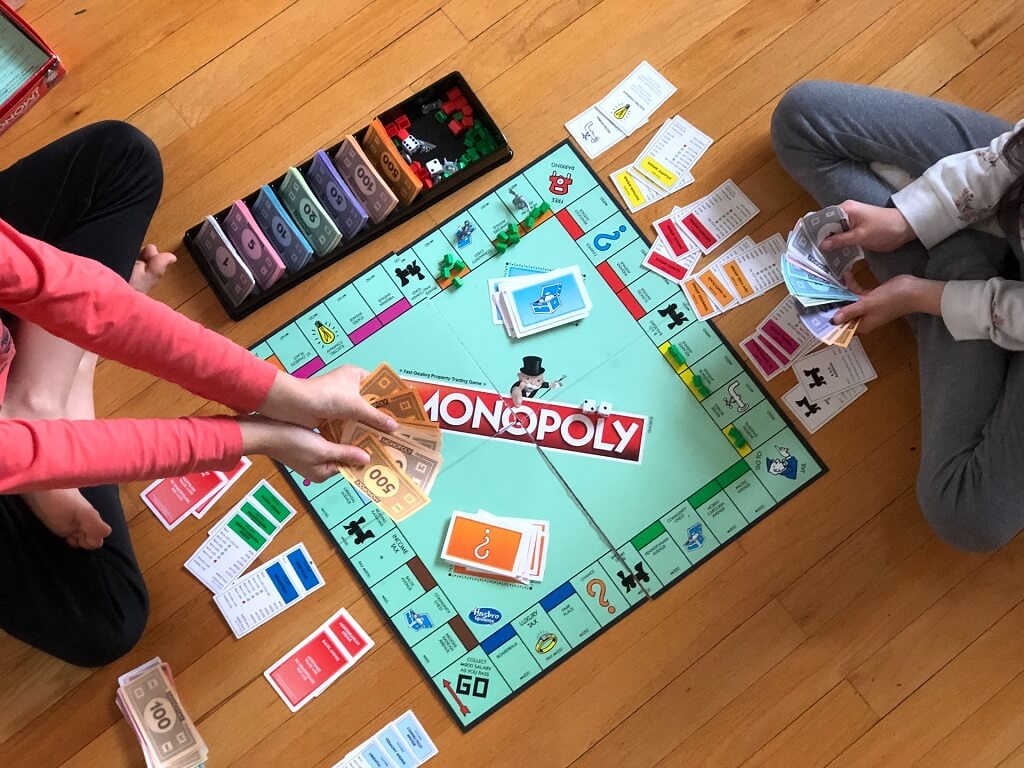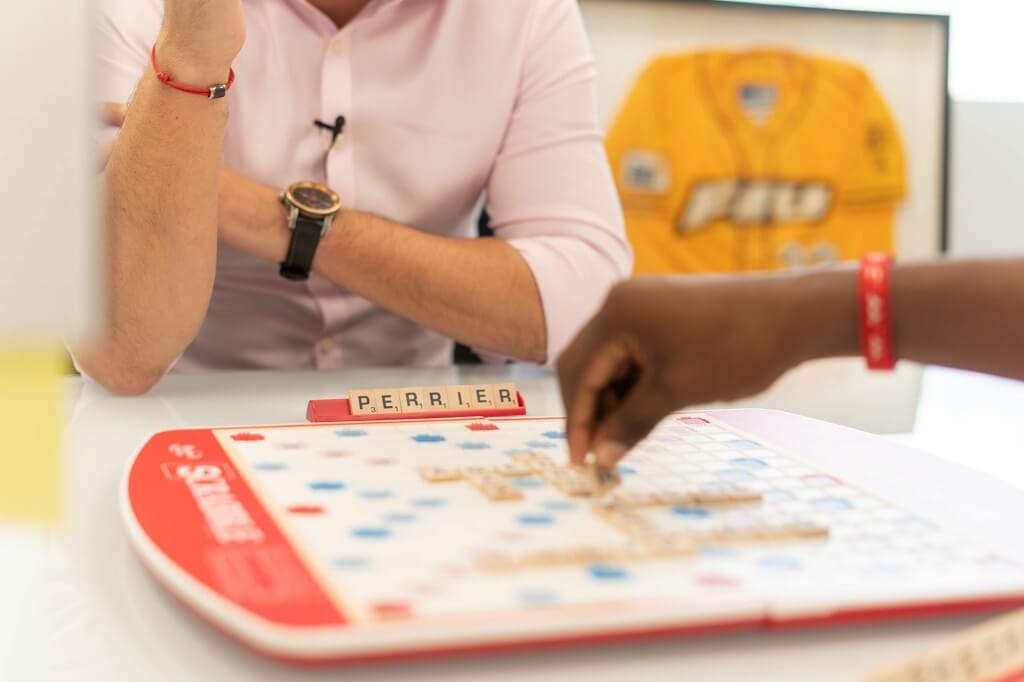If you are a board game designer, you might have found yourself in a predicament over the past few years. Is it better to create a simple mechanic and build a theme around it? Or should you start with a great theme, and then develop the mechanics around it? The debate about the topic is going on for years with each side having compelling arguments in favor of their own approach.
Table of Contents
Theme Vs. Mechanics
Game designers have to make a tough call when working on the board game: should they start with the board game mechanics and then add theme later, or vice versa? The answer to this question is entirely up to you – there’s no wrong way to do it. Both approaches have their pros and cons.
I personally tend to go for a mechanical core first, then layering on the theme later. This can lead to awkward results, though. If you’re not careful, you could end up with an interesting set of mechanics that don’t sync well with your theme at all (or worse, a good theme ruined by an ugly set of mechanics).
Others prefer going fully into the story before starting with any gameplay decisions. This usually leads to a more satisfying product for players; but for board games in particular, there’s always the risk that adding mechanics after your theme is set in stone will prove difficult or expensive (you might find yourself tossing out whole ideas whenever they don’t fit seamlessly into your existing game design).
Mechanics-First Design
When designing a game, mechanics are absolutely the most important aspect. When looking at existing games to figure out how they accomplish their design goals, you can see that theme is often sacrificed or only loosely maintained in order to preserve the integrity of the mechanics.
For example, look at Monopoly: if there was ever any theme to this game it has been so distorted by expansions and variants that it’s basically irrelevant. Monopoly is about making money – but does it matter whether you’re buying property or collecting sets of cats? No! Very rarely does a genuine sense of theme even exist in games with strong mechanics. If your goal as a designer is to create fun game designs above all else, then designing around a mechanic is definitely the way to go – and if you have difficulty coming up with themes for your mechanic, don’t worry about it.
Just write “TBD” (to be decided) right next to the name of your game as you develop it and move on with prototyping. Later, once you’ve had successful playtests and are ready to share your game with others in order to get feedback and start selling copies, then you can research different themes based on the type of mechanics in your game and figure out which one fits best.
Theme-First Design
If you’re a designer who has a handful of theme ideas but barely any board game mechanics, you should go the theme-first design route. It tends to be easier to come up with mechanics that fit your idea instead of trying to fit a mechanic into an existing idea. For example, if your theme idea is about nuclear scientists working in the lab, it’s easier to brainstorm what kind of actions they can take rather than coming up with a mechanic about nuclear scientists and then forcing them into the lab for no reason at all.
If you need more convincing, here are some examples of games that started out as specific themes:
- Dominion was originally created as “A game where players played cards and bought other cards,” which explains why there are so many different types of cards available in the game! Gameplay expanded from there.
- Pitchcar started out as “A game where players flick discs around a racetrack,” which explains why it doesn’t have any rules aside from winning and losing conditions. While this means that the game isn’t very deep or strategic, its friendly gaming experience makes it super accessible for families and younger players!
The Ideal Approach
The truth is, board game theme design is a creative process in which both theme and mechanics play an integral role. To make a good game, you must have both a good story to tell and interesting mechanics to allow the players to tell that story. While one of these elements may take precedence in certain situations, neither should be neglected if you want players to remember your game for years to come.
Designing games is an art form, so it should be savored and enjoyed by the designer. As with any artistic endeavor, you can’t really force creativity or inspiration; it just comes when it comes. When working on my own games, I often find that I’ll get a new idea for the theme first thing in the morning, but by the afternoon I’m stuck with no ideas on how to implement it properly.
In other cases, I might have some novel mechanics all worked out in my head before going to bed only to wake up and think “what was this all about?” The best way forward when this happens is simply not trying as hard (or at all) until something comes back into focus – this can take minutes or days depending on your situation.
It’s Ideal to Merge Theme and Mechanics
If you must choose, design your game around mechanics, but it’s ideal to merge theme and mechanics. Now that you have a better idea of what concepts are the most important to a board game designer, the question remains: what should you focus on? Like I said earlier, both theme and mechanics are very important in their own ways. To determine which is more important when designing a game takes an understanding of how these two key components work together.
Designing your game around mechanics means starting with gameplay and then adding a story later. For example, one mechanic for the popular role-playing video game Undertale is dodging attacks by moving through enemies during battles – which helped inspire the paper Mario games’ parry system several years later – but mechanically speaking it doesn’t make much sense from a realistic standpoint or even from an in-game perspective.
Final Thoughts
As you can see, both theme and mechanics can be powerful drivers of game design. Even the most abstract of games have elements of both, although some lean more towards one than the other. But always remember one thing, providing players with the best gaming experience is the purpose of all game designers.




